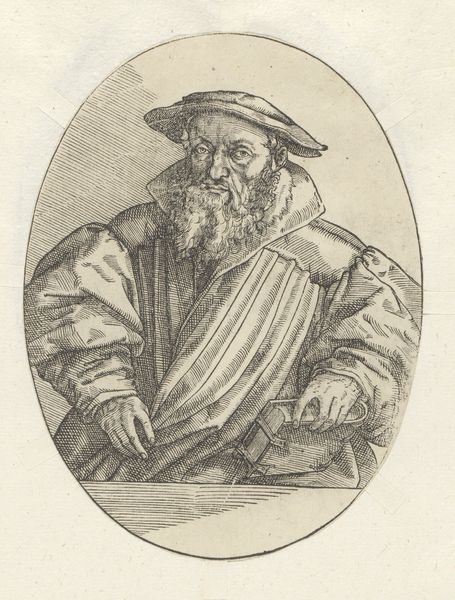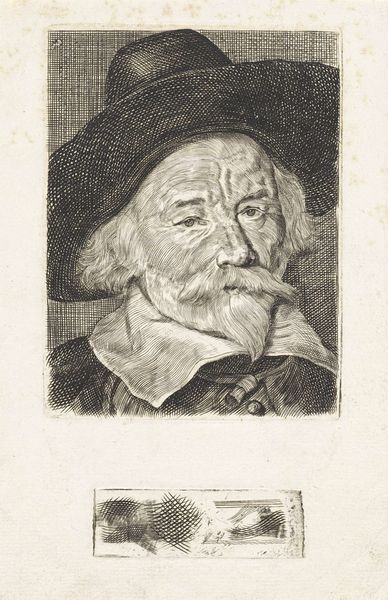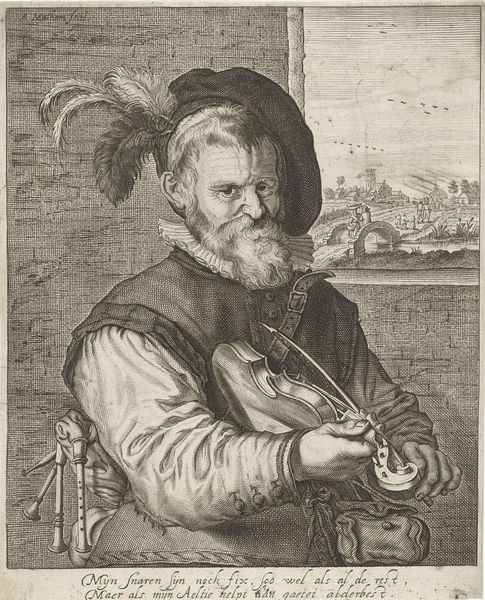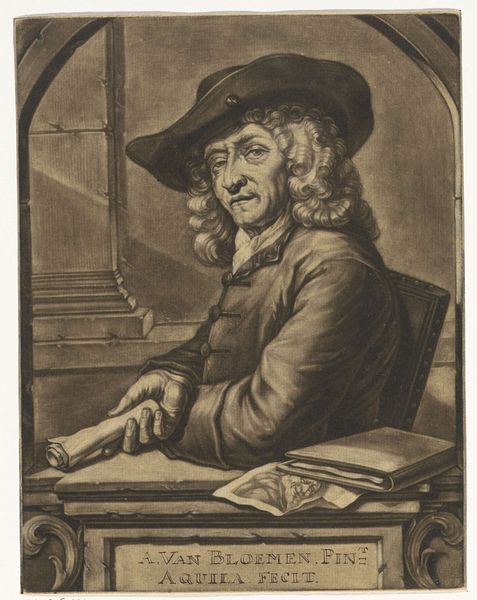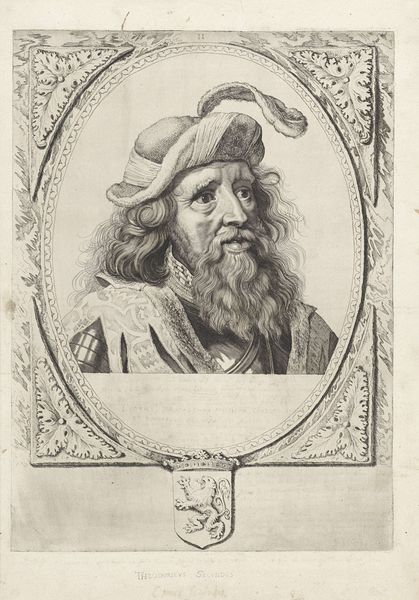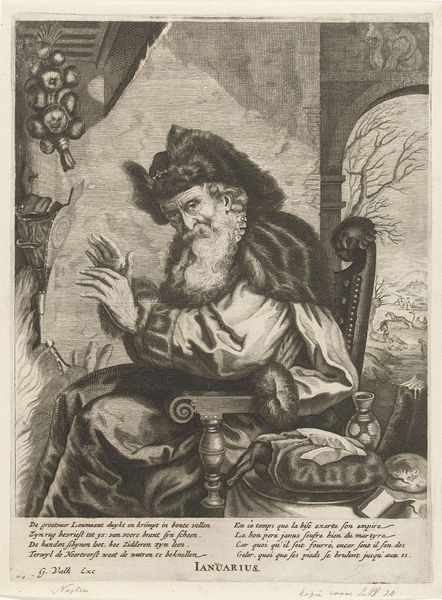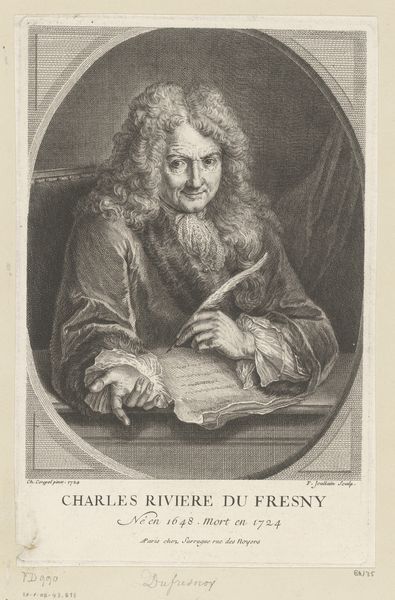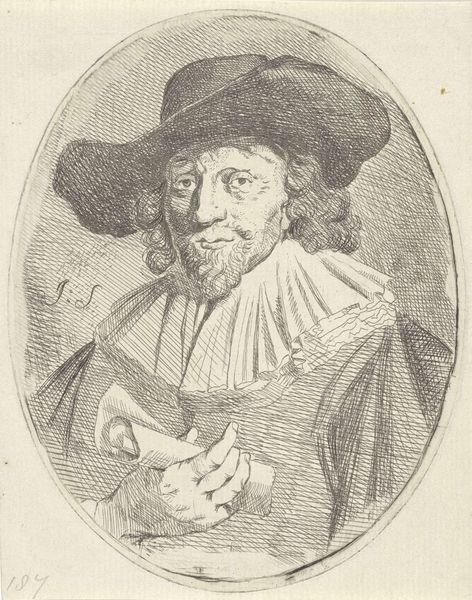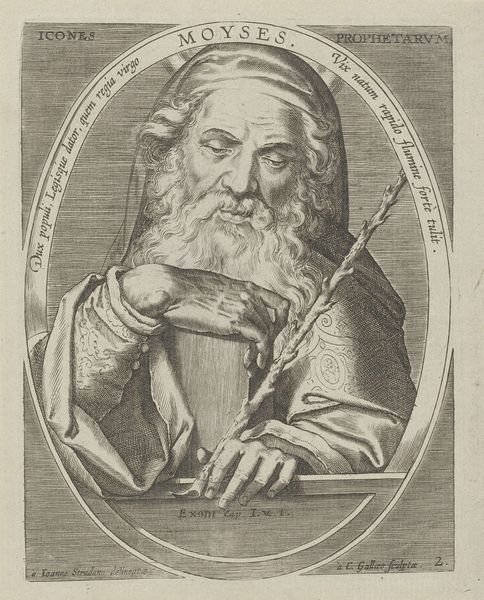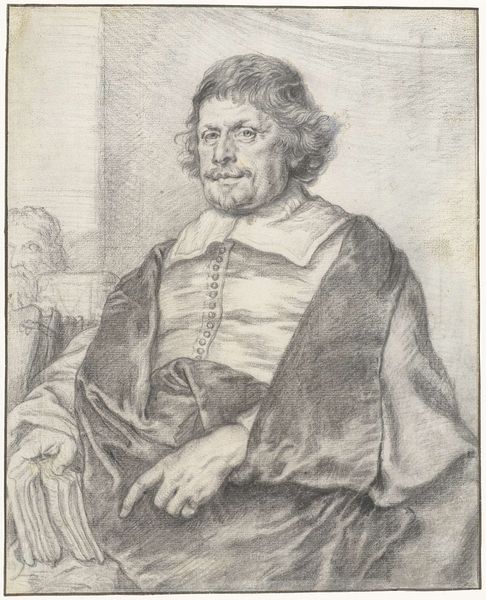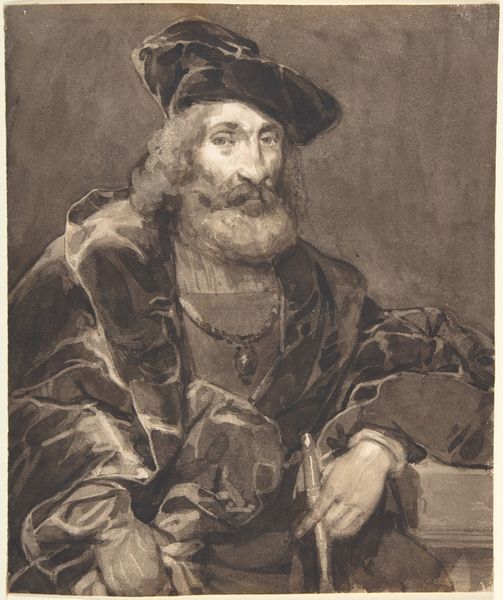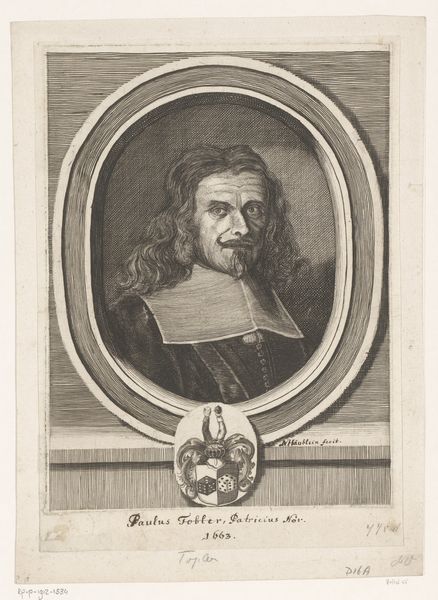
engraving
#
portrait
#
baroque
#
surrealism
#
history-painting
#
engraving
#
portrait art
Dimensions: height 297 mm, width 240 mm
Copyright: Rijks Museum: Open Domain
Curator: This is "Portret van Pieter Jansz., glasschilder," an engraving dating from about 1670 to 1680, by an anonymous artist. Editor: My first thought is how delicately wrought this portrait is! The man's expression is both intense and strangely serene, as if contemplating the very nature of his craft. Curator: It's a compelling image. Observe how the engraver captures Pieter Jansz. holding his tools: a brush and a glass. This provides insight into his artistic practice. The very act of depicting a craftsman with his instruments elevates the status of artisanal labor. It highlights the connection between material manipulation and the final, often symbolic, product. Editor: Yes, and that goblet... it’s not just a mundane object. Given the time period, it most likely held religious significance. A communion chalice perhaps? Even in the most ordinary scenes, seventeenth-century Dutch art teems with religious symbolism, particularly regarding mortality and salvation. The oval frame even recalls laurel wreaths of classical authority, doesn't it? It seems an intentional attempt to dignify this glass painter. Curator: I agree that it amplifies status, and also alludes to classical tradition through the use of familiar forms. But focusing on Pieter's relationship to glass—a substance transformable by heat and skill, also fragile and often precious. The social and economic status of this craftsman, determined by these alchemical actions, should not be understated. Look at the folds in his simple attire, they emphasize a workingman's nobility more than they do a man of great wealth. Editor: Interesting! His beard certainly conveys wisdom and experience. Perhaps it nods to an archetypal depiction of the biblical prophets— figures who often used everyday imagery to deliver profound spiritual messages. That period experienced a flowering of personal piety within a commercially prosperous landscape, all expressed through imagery. Curator: I think by analyzing his craft through these lenses, the social implications are not solely spiritual but connected intimately to material transformations that elevate glass making, or devalue it to something ornamental and fleeting. Thank you for pointing toward iconographical parallels. It is truly interesting how it interweaves both our points of view to appreciate how the symbolism becomes both economic and historical for artisans in that period. Editor: Precisely. Ultimately, the enduring appeal here resides in both those material insights into labor as well as in how the familiar patterns echo through centuries, whispering about value and purpose, I'd say.
Comments
No comments
Be the first to comment and join the conversation on the ultimate creative platform.
